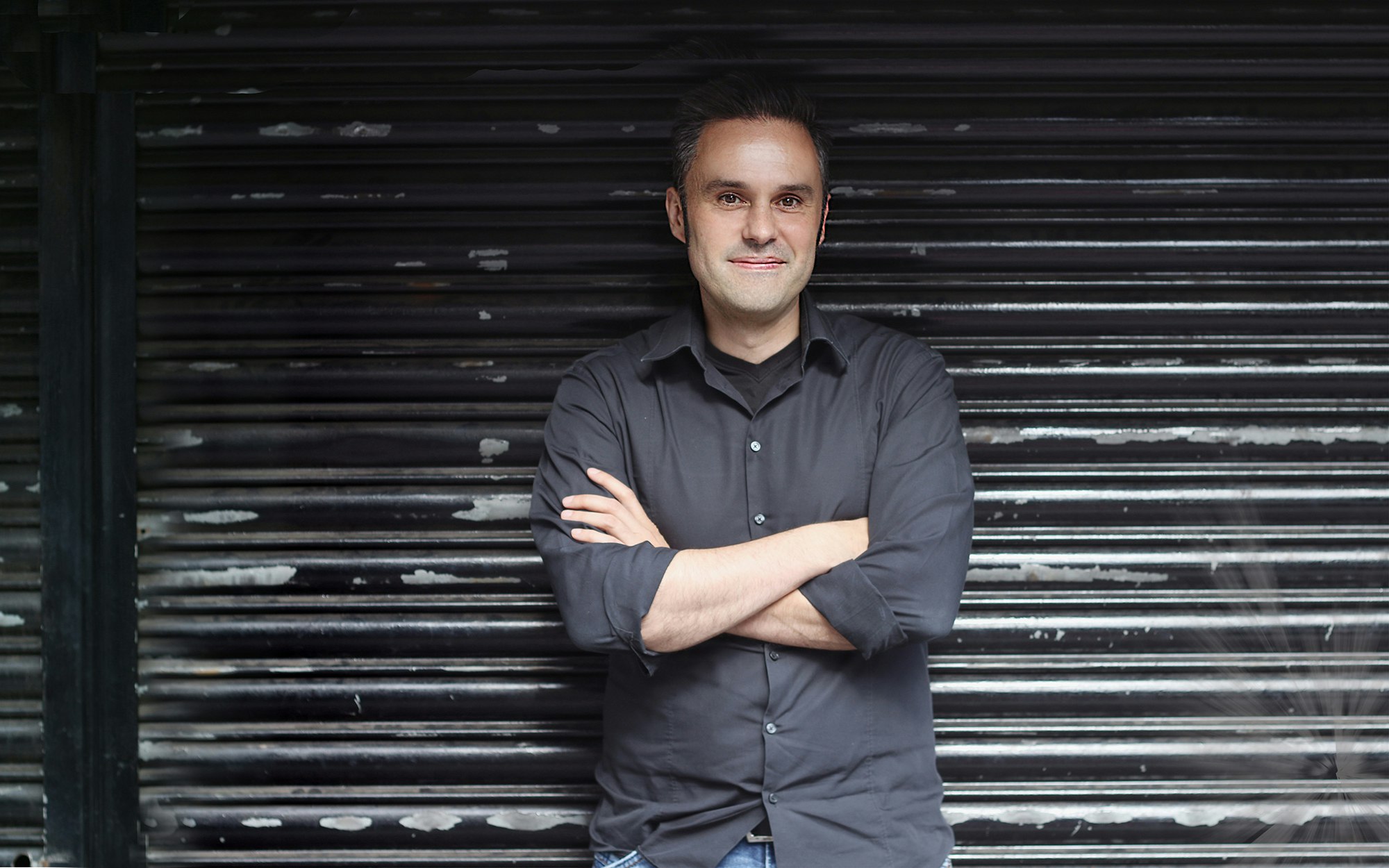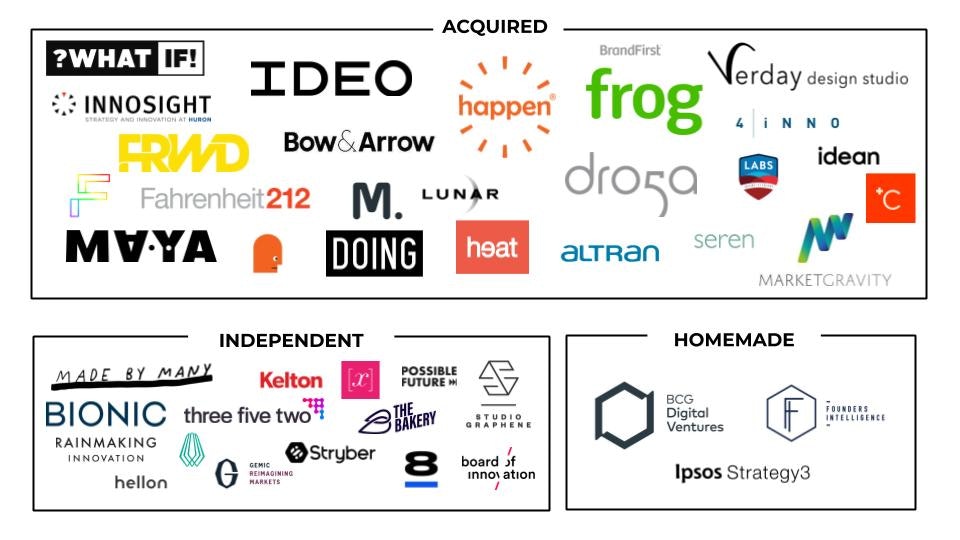Neena Paul, formerly US chief executive for ?What If! Innovation, now serves as chief innovation officer at ?What If! Innovation, and is a managing director at Accenture after the Big Four consultancy acquired the company in March 2019.
Paul is a doer rather than a thinker — she says she believes in "the field book over the textbook" and one of the appeals of joining Accenture was to have more tools to help companies not just dream up new initiatives but actually build and run them too. Covid-19 is taking a toll on innovation teams — like in 2008 they are among the first to see cuts. But at the same time companies are being forced to adapt the scrappy agile methodologies that innovation consultants have been preaching for years. So that's at least a partial win.
Now, the challenge will be to make sure companies don't "waste a good crisis" and to make these changes stick for the long term. Future Proof asked Paul about what comes next.
How do you define ‘innovation’?
Is it a thing, a behaviour, a process, a future? It’s come to mean all of these things. At ?What If! we put a stake in the ground to equate innovation with growth. Our work focuses on two sides of innovation for growth — both the “building of growth futures” (innovating for the customer — vision, products, services, brands and businesses) and “leading growth cultures” (innovating for the employee — leadership, culture and capabilities to unlock human potential).
The innovation industry can lead the charge by considering how our ideas are inclusive and fight against systemic racism
How does the innovation industry look in 2025?
This is a big question. To answer it, I think you have to start with what kind of human problems will be needing innovation to solve? What types of things will our clients be grappling in five years?
Innovation for good & profit
I believe that we are at the beginning of an era where companies and brands are taking on a greater sense of responsibility to the communities they serve. They are stepping in to fill gaps once solely filled by governments and social agencies. They are standing up for things they believe in and are starting to use their scale and influence as a force for good in the world, which will also be good for business. People will “vote” with their dollars. The innovation industry can help lead the charge by considering how our ideas are inclusive and fight against systemic racism in industries and markets, how our ideas can help accelerate sustainability, how our ideas can educate and promote ethical technology usage, and more.
Building not just solving
I also think we are at the beginning of seeing the impact of innovation not just coming from “solving problems” to being equally about “building solutions”. That is why we wanted to join Accenture 18 months ago. We felt that the future of innovation consulting demanded both deep technology expertise as well as the capability to build future solutions, stand up new businesses and even help run them if needed.
Consider employees as well as customers
We are seeing CEO’s start to include “culture” right alongside “innovation” as a key pillar of their growth strategy. They recognise that innovation is all about growth creation, but culture is how you can ensure that growth is sustained. That’s why we use innovation methodologies to both launch new products but also to create culture movements within an organisation. If we agree that organisations need to “innovate or die” then corporate innovation has to consider both the customer and the employee.
Technology & data
All companies will be technology companies. This will create new roles, new ways of working, new revenue streams and more. So, innovators will need to have what we call at Accenture TQ, "technology quotient", in order to create and build future growth.
What is your best communication or corporate storytelling tool when trying to get buy-in from corporations?
Bring your whole self to business — share a bit of yourself and what you love to connect as humans first.
The founder of Independent Diplomat, Carne Ross, told me a story of how he got to break down barriers at a UN Security Council meeting, all with a boom box. They were in a stalemate, no one willing to budge in order to reach an agreement. After a few days of negotiations, Carne showed up with a boom box in hand and played everyone his favourite British punk song Wild Wood by Paul Weller. He explained why he loved it and watched the energy start to shift. As the week continued, a diplomat from another country played their favourite local song at the beginning of the day. It became infectious, China, Norway, France and Jamaica all shared. People started to not just talk, but also really listen. They were able to progress the dialogue and work together, all by sharing a little bit of themselves and what they love.
“Behaviours eat process for breakfast”
How do you challenge yourself and your team to ‘think outside the box’?
We start every challenge by asking: "What if? What now? And what next?". Our teams don’t start with current state, they start with what could be possible. Understanding where a business is today is very important in order to ensure your innovations are based in reality, but if you start there it can limit innovation. Inherent in that is the idea that “behaviours eat process for breakfast” (our take on the strategy line). We spend a lot of time talking about how we as humans show up to tackle innovation for growth challenges.
Why have the large corporations (e.g. P&G, Google, Nike) worked with between 6–10 different innovation consultancies, why not stick to one?
We are in the industry of discovery so it is almost contradictory to not work with the latest, hottest innovation company when you are a large corporation. We use the word 'freshness' internally to help define innovation and it is the nature of freshness to always discover and try new things, including innovation partners.
What is currently NOT working in corporate innovation?
Being led by a fixed corporate strategy and growth ambition that was based on “predicting a single future” versus one that uses innovation methodologies to create an adaptive strategy based on mapping to “multiple futures”.
Winning companies are those that lead, experiment, adapt and learn the fastest. Those that consider the number of “at bats” they take as a strategic advantage, like Amazon and Alphabet, all while recognising where to double down on some big audacious plays. It is time for large organisations to build upon design thinking (how individuals innovate) and lean startup (how teams innovate) to consider how to experiment at scale. That includes the previous two approaches, but it also takes into consideration agile economics, inventive spirit, democratising innovation, and fuelling a culture of deliberate risk-taking.
What advice would you give to a new Head of Innovation — what do they need to get right from day one?
- Start with an equal mix of strategy and action — innovation is a doing not a talking sport.
- Do everything you can to find and nurture an alchemy of innovation talent.
- Figure out early how to perform and transform at the same time.
What is the best advice about innovation (or the innovation industry) that you have been given?
Don’t waste a crisis.
Our clients are driving one massive innovation sprint right now, living all of the new ways of working we preach: customer problem obsession, experimenting at warp speed, growth mindsets, breaking down silos, 80% good is good enough, pivoting everywhere, partnering outside their organisation and getting scrappy.
We’ve heard CEOs say things like: "We have innovated more in the last month than the last ten years," and "Our leadership team are making 3 bold decisions and actioning them each day".
Now, all we need to do is figure out how to sustain some these changes without the stress of a crisis.
What book has been most helpful to you in thinking about corporate innovation?
Science of Serendipity by our founder Matt Kingdon and The Culting of Brands by Douglas Atkin, former head of community at Airbnb.
But I love documentaries and docuseries on innovators and pioneers in any industry from multiple eras, a few of my favourites are:
- Chef’s Table inspires me with every episode
- Maya Angelou “Still I Rise”
- Pavarotti
- Michael Jordan “The Last Dance”
Is there a benefit to bringing in an external innovation team in contrast to creating an in-house function?
I believe both are critical. Innovation can no longer be a separate capability, it needs to be a part of the fabric of any business to help them adapt, pivot and grow with the pace of change we are facing today. But, the advantage of an external team is how they can open the aperture on the growth challenge.
Competitive and industry lines blur when it comes to innovation, especially adjacent and breakthrough innovation. An external team can bring knowledge, insight and foresight from a broad range of opportunities and when working collaboratively with a client team, you can get both the depth and the breadth needed to drive new growth. They can also bring with them the latest capabilities to help you build solutions, not just conceive them. I asked a colleague of mine recently why he left a practice he built to join Accenture and he said that they always envied all of the capabilities Accenture has to drive growth and transformation.
What is the biggest mistake you’ve made related to corporate innovation?
Playing it safe.


